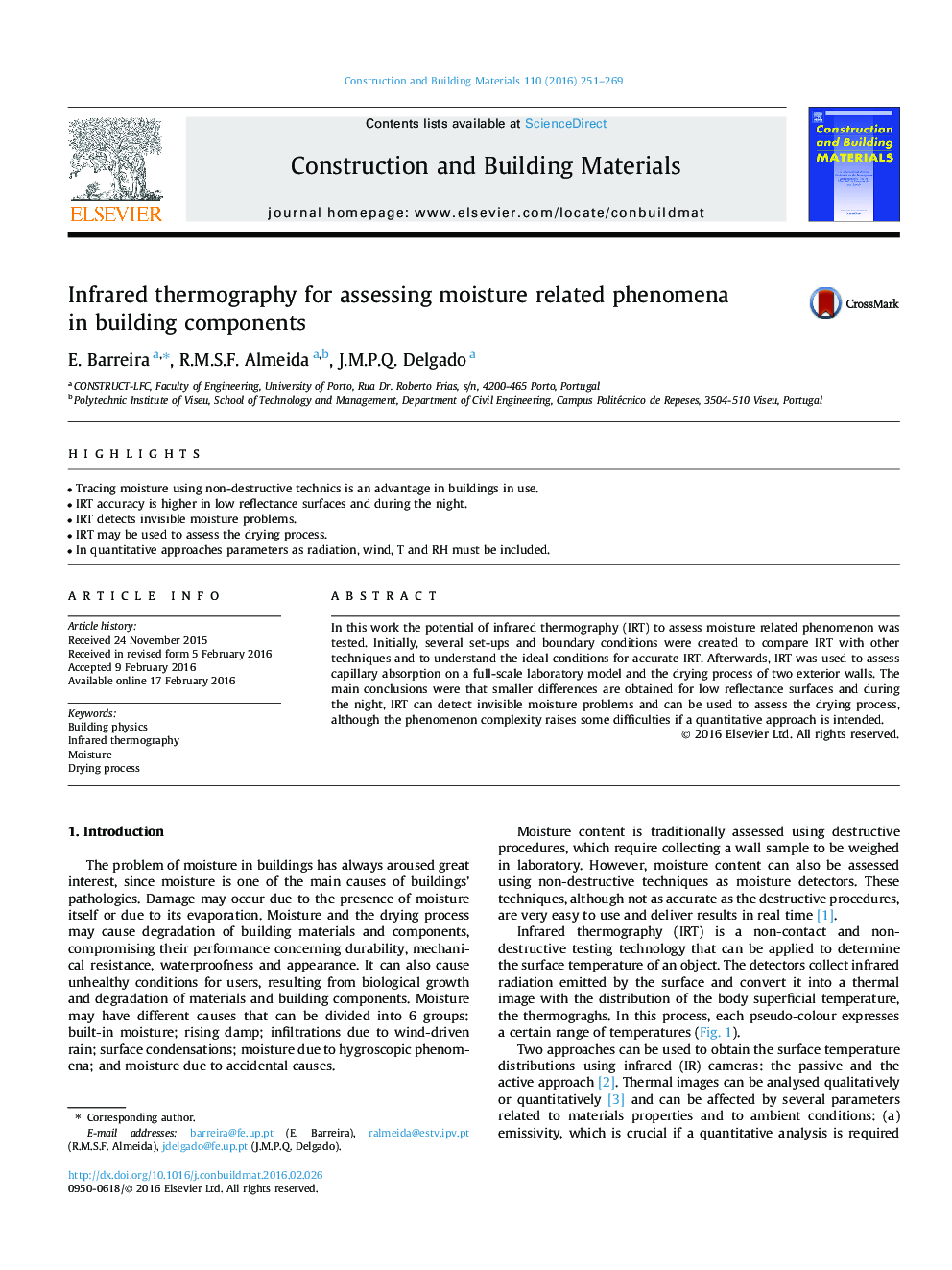| Article ID | Journal | Published Year | Pages | File Type |
|---|---|---|---|---|
| 256081 | Construction and Building Materials | 2016 | 19 Pages |
•Tracing moisture using non-destructive technics is an advantage in buildings in use.•IRT accuracy is higher in low reflectance surfaces and during the night.•IRT detects invisible moisture problems.•IRT may be used to assess the drying process.•In quantitative approaches parameters as radiation, wind, T and RH must be included.
In this work the potential of infrared thermography (IRT) to assess moisture related phenomenon was tested. Initially, several set-ups and boundary conditions were created to compare IRT with other techniques and to understand the ideal conditions for accurate IRT. Afterwards, IRT was used to assess capillary absorption on a full-scale laboratory model and the drying process of two exterior walls. The main conclusions were that smaller differences are obtained for low reflectance surfaces and during the night, IRT can detect invisible moisture problems and can be used to assess the drying process, although the phenomenon complexity raises some difficulties if a quantitative approach is intended.
